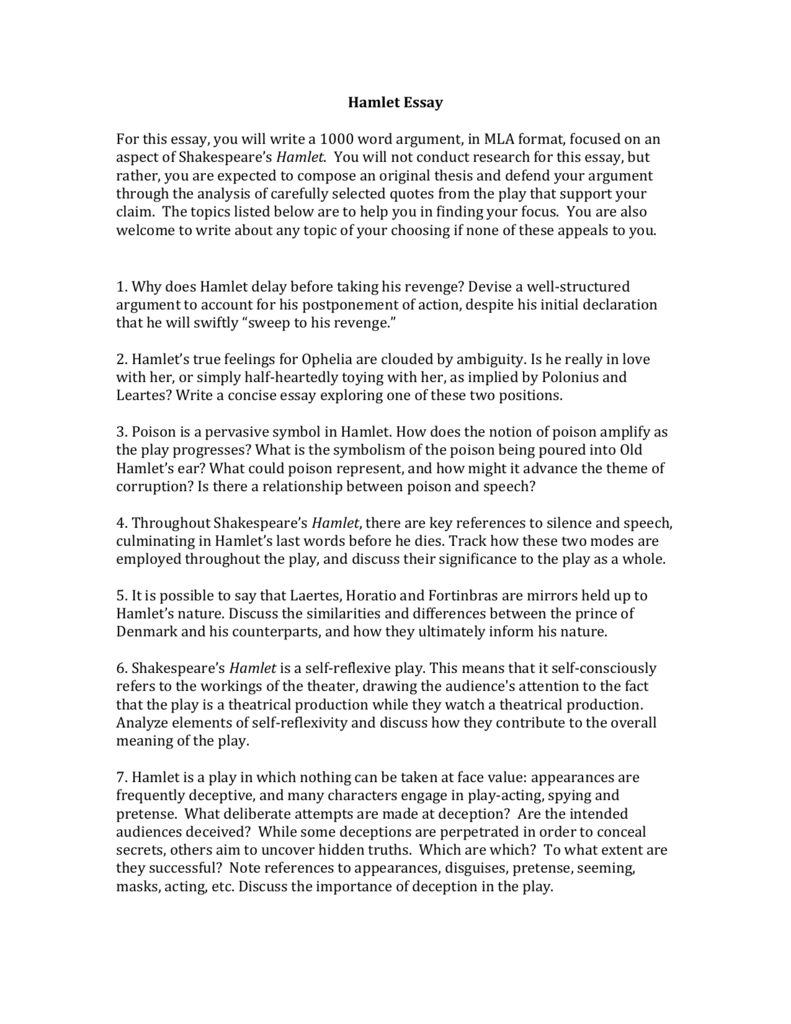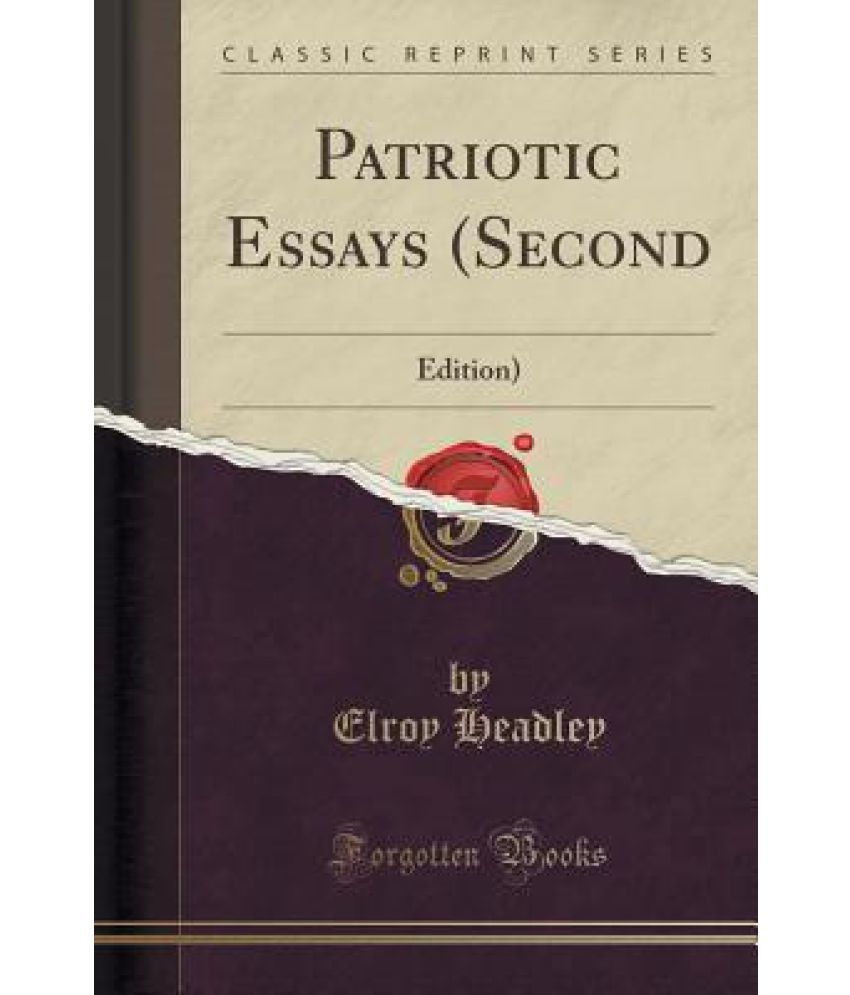
Hamlet, although he is a rather irresolute and indecisive character when Shakespeare wrote the “To be or not to be ” speech, Hamlet not only contemplates whether or not to commit suicide but for once in the play he answers and resolves his own problems 1/6/ · For instance, the "To be or Not To Be" soliloquy, perhaps one of the most well known quotes in the English language, Hamlet actually debates suicide. His despair, sorrow, anger, and inner peace are all justifiable emotions for this troubled character. Hamlet's feeling of despair towards his life and to the world develops as the play moves on 10/5/ · Hamlet "To be, or not to be - that is the question: Whether 'tis nobler in the mind to suffer The slings and arrows of outrageous fortune Or to take arms against a sea of troubles And by opposing them." This sentence is possibly one of the most famous ever written by Shakespeare or by anyone at all
Hamlet: To Be or Not to Be? essays
The first of these occurs before he has seen the Ghost, hamlet to be or not to be essay. In this soliloquy, Hamlet reveals the grief that has been gnawing at his mind, hamlet to be or not to be essay. He wishes that religion did not forbid suicide so that he could kill himself and be rid of this grief.
He feels disillusioned with the world. He deplores condemns the. The soliloquy spoken by Hamlet in Act IV, scene IV illustrates a remarkable shift in Hamlet's personality. Up until this point, Hamlet has been an extremely indecisive and submissive character. In Act II, Hamlet decides that "the play's the thing wherein I'll catch the conscience of the king". When Hamlet comes across Claudius while he is praying. Hamlet by William Shakespeare is considered to be the greatest play of all time.
This play is very famous for its intricacy and pure genius of the use of the human mind to trick. A soliloquy is a long speech spoken by a single character, similar to a monologue and often found in plays. It usually reveals plot details or motivations that increase the depth of the work.
The imagery that Hamlet employs in his soliloquy can be. In the play Hamlet, there are three very important soliloquies given by Hamlet, first Too Too Sullied Flesh, second O, What a Rogue and Peasant Slave, and third To be or Not To be.
All three speeches discuss one main theme of death, with sub themes of revenge, parent-child relationship, and loyalty. Hamlet always seems to be at a conflict with himself, he has an inability to act on his emotions.
He knows what he wants to do, thinks about it and his conscience eventually convinces him to not complete. Shakespeare's play Hamlet, the main character Hamlet returns home to Denmark from school in Germany to attend the funeral of his father who mysteriously died. Upon returning home, Hamlet learns his mother has already remarried to his uncle Claudius. Hamlet comes in contact with the spirit of his father who tells him that Claudius is responsible for his death.
Shakespeare uses seven soliloquies throughout. The land was worth nothing to neither Norway or Poland yet both took up arms to. In this play the protagonist, Hamlet undergoes a major change during the play. Soliloquies in Hamlet Soliloquies are used by writers because they offer the reader or audience the opportunity to know more about the character, hamlet to be or not to be essay, his true self and inner thoughts, hamlet to be or not to be essay, as well as pieces of information that cannot be revealed through a normal conversation between characters.
Shakespeare uses this method with his characters very often to provide a deeper understanding of his characters, and Hamlet speak seven of this, being each one necessary and important for the plot development.
Home Page Research Hamlet to Be or Not to Be Soliloquy Analysis Essay. Hamlet to Be or Not to Be Soliloquy Analysis Essay Words 4 Pages. The "To Be or Not To Be" speech in the play, "Hamlet," portrays Hamlet as a very confused man. He is very unsure of himself and his thoughts often waver between two extremes due to his relatively strange personality. In hamlet to be or not to be essay monologue, he contemplates whether or not he should continue or end his own life.
Evidence of his uncertainty and over thinking is not only shown in this speech, but it also can be referenced in other important parts of the play. Throughout the speech, it is obvious that Hamlet is over thinking and wavering between two different extremes: life and death.
His entire monologue compares the two extremes: life and death. He analyzes both situations and thinks very much about hamlet to be or not to be essay consequences of either action. Hamlet does not only have a hard time choosing between life and death. He also can not choose between murdering Claudius or not. Even though Hamlet wanted to kill his uncle, he was terrified of the possible consequences and could not make a concrete decision. Consequently, he ended up procrastinating greatly with the murder.
Hamlet knows that he over thinks everything. He says, "Whether it be Bestial oblivion, or some craven scruple of thinking too precisely on th'event -A thought which quartered hath but one part wisdom And ever three parts coward -I do not know Why yet I live to say this things to do" 4, 4, He sees himself as either being a coward and as hamlet to be or not to be essay thinking his actions to delay the murder, instead of killing Claudius when he had the chance.
Get Access. Read More. Hamlet Soliloquy Analysis Words 4 Pages The soliloquy spoken by Hamlet in Act IV, scene IV illustrates a remarkable shift in Hamlet's personality. Hamlet Soliloquies Analysis Words 4 Pages A soliloquy is a long speech spoken by a single character, similar to a monologue and often found in plays.
Hamlet Soliloquy Analysis Words 6 Pages In the play Hamlet, there are three very important soliloquies given by Hamlet, first Too Too Sullied Flesh, second O, What a Rogue and Peasant Slave, and third To be or Not To be.
Hamlet Soliloquy Analysis Words 3 Pages Shakespeare's play Hamlet, the main character Hamlet returns home to Denmark from school in Germany to attend the funeral of his father who mysteriously died. Hamlet Soliloquy Analysis Words 6 Pages Soliloquies in Hamlet Soliloquies are used by writers because they offer the reader or audience the opportunity to know more about the character, his true self and inner thoughts, as well as pieces of information that cannot be revealed through a normal conversation between characters.
Popular Essays. Love in the Time of Cholera Essay Flu Vaccine Case Study Essay Acute Exacerbation of Asthma - Case Study Essay Struggles Facing Women in the Police Force Essay Research Paper: Tobacco Industry Essay about Strategic Management Task 1.
Additional Student Resources. Joint Income Tax Return For Summary :'sitting Bull ' Local Impact On The Community Hitler, The Jew And His Brood Risks And Risks Of Risk African Slavery And The New World 's Demographic Profile Obstructions 's Autonomy Of Self Discovery Comparative Paper On Owning Your Own Business The Australian Economy : Australia Tort Law Can Be Defined As An Area Of Law Family As Being Descendants Of The Same Ancestors Students Are Not Getting The Proper Sleep They Need.
To Be, Or Not To Be; EXPLAINED!
, time: 8:17Hamlet to Be or Not to Be Soliloquy Analysis Essay - Words

9/12/ · The famous "To be or not to be" soliloquy comes from William Shakespeare’s play Hamlet (written around ) and is spoken by the titular Prince Hamlet in Act 3, Scene 1. It is 35 lines long. Here is the full text: To be, or not to be, that is the question Hamlet to Be or Not to Be Soliloquy Analysis Essay. Words4 Pages. The "To Be or Not To Be" speech in the play, "Hamlet," portrays Hamlet as a very confused man. He is very unsure of himself and his thoughts often waver between two extremes due to his relatively strange personality. In the monologue, he contemplates whether or not he should Hamlet, although he is a rather irresolute and indecisive character when Shakespeare wrote the “To be or not to be ” speech, Hamlet not only contemplates whether or not to commit suicide but for once in the play he answers and resolves his own problems

No comments:
Post a Comment